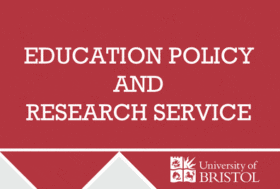Beyond tree planting: Deepening our approach to climate education

THOMAS JOHNSON, HEADTEACHER, SEYMOUR PARK COMMUNITY PRIMARY SCHOOL
Introduction
This case study explores an approach to climate education as an interwoven part of a school’s curriculum, through a three-year research project undertaken at Seymour Park Community Primary School in Old Trafford, Manchester. The Treescapes Voices of the Future (2024) project focused on 90 children over three years, beginning when they were in Year 3. We worked alongside Manchester Metropolitan University, City of Trees and other partners.
Background
Seymour Park is one of the largest and most diverse primary schools in England. Around 700 young people from Old Trafford, Manchester attend our three-form-entry school. The school is accredited by UNICEF as a Gold Rights Respecting School, with children’s rights a core value of the school.
As with many urban schools, our children live in a community where access to nature is limited. However, this does not mean that our children are disconnected from the environment or have no experiences of climate education. They care deeply about their green spaces, and their wish for more always tops any pupil survey that our school conducts. Jayavant (2016, p. 2) argues that school leaders should see it as their role to lead on local social issues like this: ‘Educational leaders who lead for social justice and equity respond by valuing, identifying, taking responsibility, acting to correct injustices and implement new processes that embody social justice and equity for all in their educational context.’
At Seymour Park, we embrace this approach to education, seeing schools as an integrated part of their communities and a vehicle for facilitating positive change within those communities. Richard et al. (2023, p. 681) describe this as ‘the school community as intertwined within a seamless web in which advocacy in the school would impact the community and vice-versa’. We rooted our project in this idea that if our children and community care about climate and their environment, so should the school.
Nature and climate education is therefore a priority for our school, but also increasingly for all schools in England. The Department for EducationThe ministerial department responsible for children’s services and education in England cites climate education as their first action area within their 2023 policy paper ‘Sustainability and climate change: A strategy for the education and children’s services systems’. They identify the high priority that young people place on this issue and have the aim of ‘empower[ing] all young people to be global citizens, through a better understanding of climate change and a greater connection to nature’.
Our approach
The research project that we undertook reimagined an approach to climate education that was rooted in our children’s lived experience, was interwoven across the curriculum and saw children as active co-researchers – a project that went beyond isolated activities (as tree planting can often be) and isolated lessons or assemblies (as climate education can often be).
We began with a concept universal to children: trees. We explored what trees meant to our young people, what their experiences of trees were and how they saw trees. This shared starting point was important, as it gave the children a familiar hook to hang their learning from. It grounded their future learning in something real and meaningful to them. It also allowed us the first opportunity to attend to our children’s voice – something that would become a central theme of the project.
During this listening phase, we also introduced another important component of the project, which was to include the children as active co-researchers. For example, they understood the importance of consent when approaching research, they measured trees’ growth and they logged data into external systems. Their inquisitive enquiry helped to steer the future phases of the project and empowered the children to be active participants.
Growing out of the listening phase came the first round of practical activities. We started with designing a new woodland for a small patch of adjoining land that the school had leased from the local authority, and the children then proceeded to plant it. Nothing quite speaks to the optimism of young people like the prospect of creating a forest and then being asked to plant sticks no longer than a 30cm ruler.
As the trees grew, so did the project and the curriculum threads. This three-year phase was in many ways the most important, as it broadened the children’s understanding of climate through their developing knowledge of the environment as a whole and their own environment over time. Furthermore, as the children had been central in designing many of the activities, sharing their voice throughout, their engagement was high.
A good example of this came from the children’s interest in tree roots, which led to a powerful learning activity later in the project, where the children explored the differences between tree roots in urban trees and tree roots in wilder trees. This furthered their understanding of a climate challenge faced by urban environments like their own.
Here is a summary of some of the interwoven curriculum activities with which the children engaged over the course of the three years in our local community:
- ongoing tree measurement and care
- lessons on carbon and measuring carbon stored in local trees
- the use and development of tree identification and naming apps
- studying roots in urban trees and wilder trees
- leaf identification
- keeping an ongoing journal for reflections on each activity
- writing a manifesto for change and designing the artwork
- presentation to parents
- developing research material resources for teachers.
Finding the time for these activities required creativity and a long-term approach. While we initially viewed this as a challenge, it ultimately helped the project because every new activity, often separated by terms, allowed the children to reconnect and grow further. In addition, this long-term approach helped the school to provide multiple teachers with the necessary time to fully engage with the project and take ownership of the work. Their feedback suggested that the sense of sharing the work with other teachers over multiple years helped them to manage the workload challenge of a large-scale project.
The project culminated with the children and staff presenting at the British Education Research Association (BERA) Conference in September 2024, not only presenting their case for a broad approach to climate education rooted in trees and their community, but also presenting themselves as co-researchers in a room of adults whom they saw as peers.
Findings and implications
We have learned that climate education grounded in school values and the school’s community, grounded in the lived experiences of children and connected with something meaningful to them – trees – leads to greater understanding and engagement. This is evident from the surveys and feedback forms from the children. For example, many of the children stated how much more they now knew about trees and the climate. One child’s feedback was particularly powerful. They said: ‘The Treescapes project made me feel disappointed and hopeful. The reason I feel disappointed is because people are not taking care of the trees but I feel hopeful that we can make a difference.’
As a school, we are considering how we use the learning from this project to successfully thread climate education throughout our whole curriculum as part of our school’s long-term strategic planning.
There are challenges here, not least the lack of space to plant more trees! However, we are excited to develop this curriculum thread further, endeavouring to carve the much-needed pockets of interconnected space across all key stages that will allow this work to truly flourish.
In addition, our community-centred approach helped to facilitate a number of other climate-related community projects. For example, Seymour Park is now a pioneer school for the School Streets initiative, which involves schools and communities working together to close the heavily congested and polluting road outside our school at pick-up and drop-off times.
Recommendations
For practitioners wishing to explore a broader approach to climate education in their own settings, consider the following:
Thread climate education throughout the school experience
Provide space, however small, for climate education to be woven into all aspects of the curriculum and school’s work over time. Allow explicit and implicit links to be made.
Root climate education in your community and values
Harness the connection that children and young people have with their communities as a starting point for climate education. Adapt your approach to suit your community and context.
Attend to the experiences of children and young people
Meet your children where they are. Allow opportunities to listen and understand and build from there. Engage the children as co-researchers, leaders and advocates.
References
Department for Education (DfEDepartment for Education - a ministerial department responsible for children’s services and education in England) (2023) Sustainability and climate change: A strategy for the education and children’s services systems. Available at: www.gov.uk/government/publications/sustainability-and-climate-change-strategy/9317e6ed-6c80-4eb9-be6d-3fcb1f232f3a#action-area-1-climate-education (accessed 1 September 2024).
Jayavant S (2016) Mapping the complexities of effective leadership for social justice praxis in urban Auckland primary school. Education Sciences 6: 11.
Richard MS, Salisbury J and Cosner S (2023) The school-community connection: Social justice leaders’ community activism to promote justice for students. International Journal of Leadership in Education 26(4): 680–700.
Treescapes Voices of the Future (2024) Treescapes: Voices of the Future. Available at: https://treescapes-voices.mmu.ac.uk (accessed 1 September 2024).









